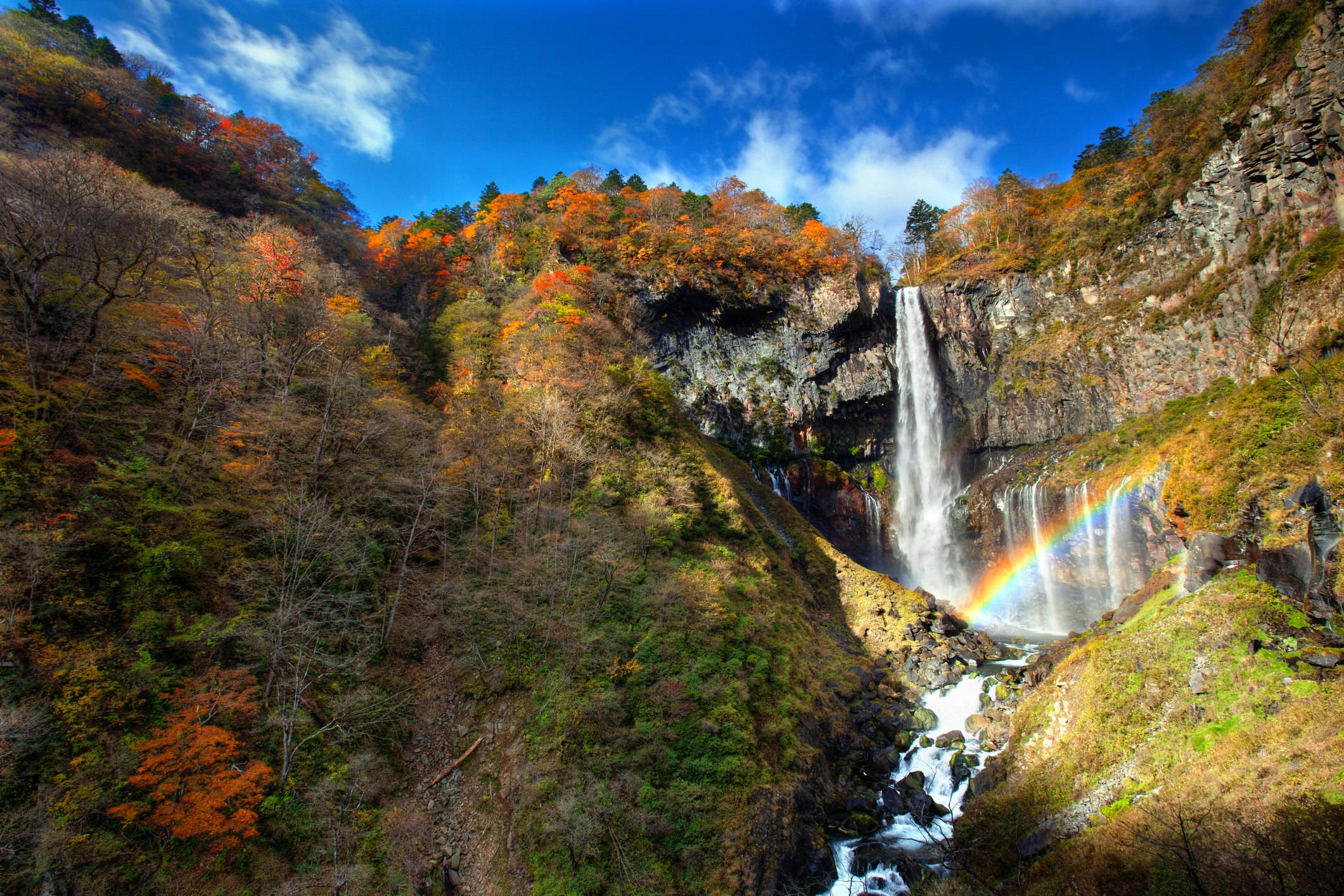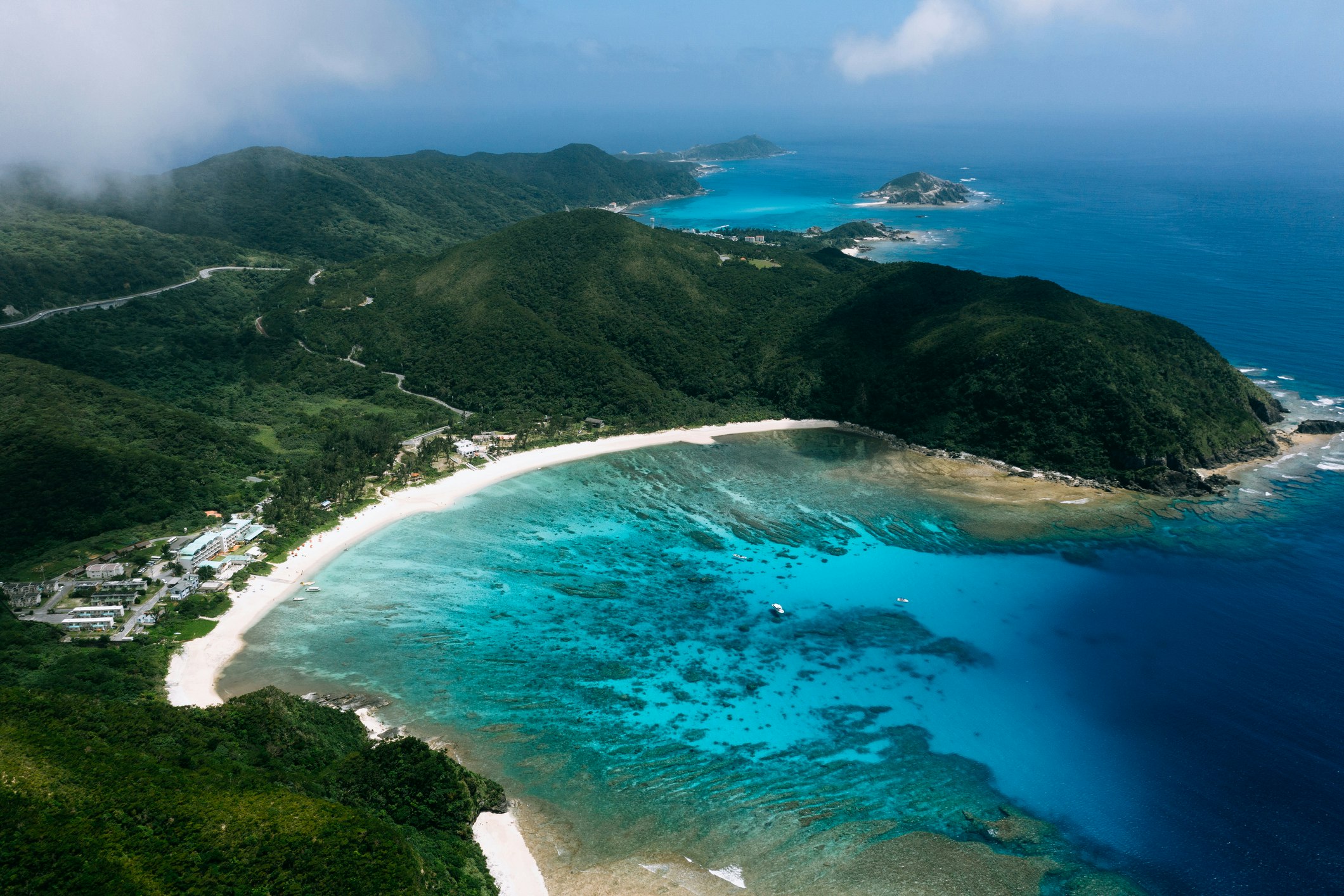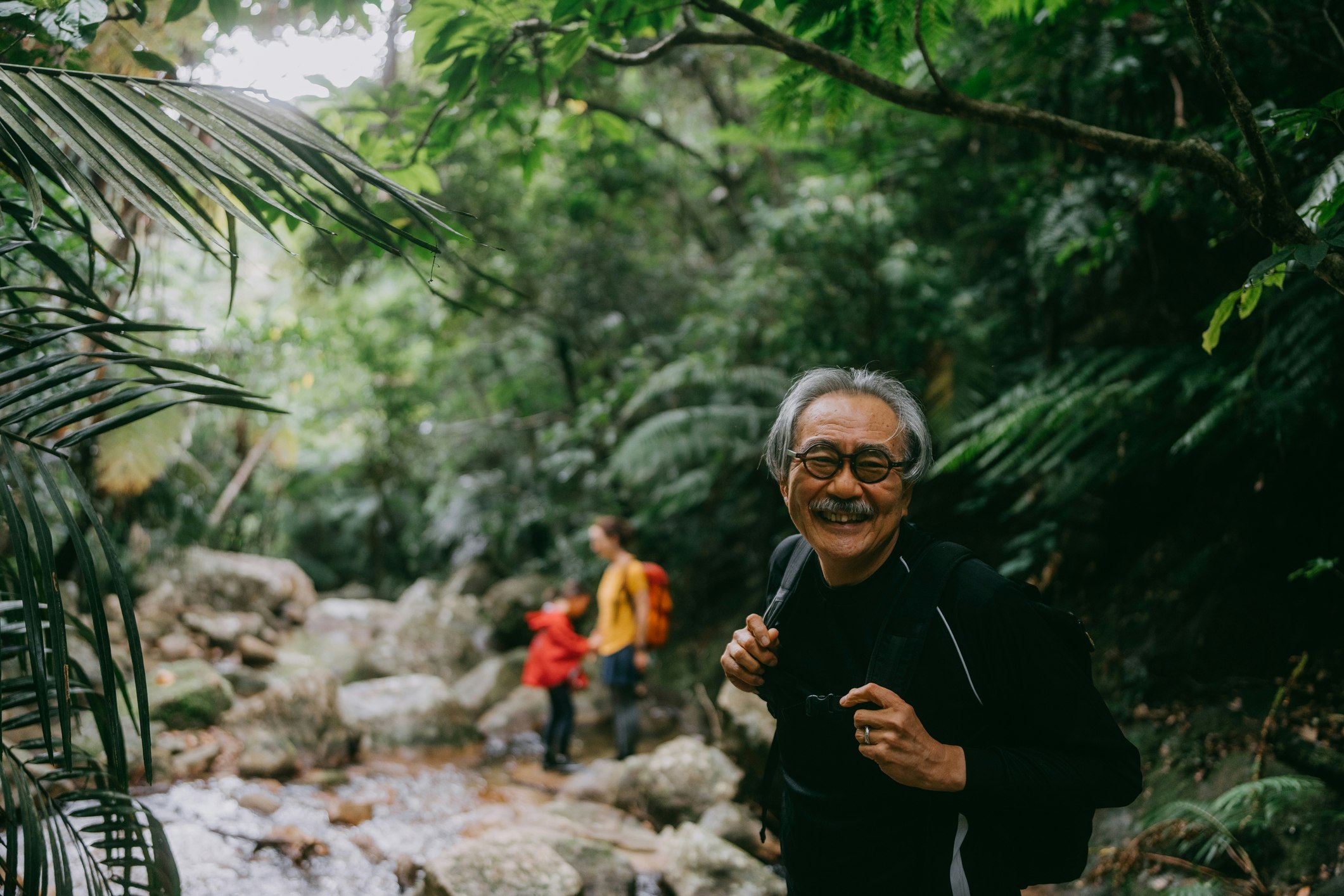For a relatively small country, Japan packs in a diverse array of ecosystems and landforms to delight the senses. There are simmering, goliath volcanoes and expansive coastlines, as well as peaceful, dreamy islands and lush, dense forests that march over mountains and down through valleys. Whether you enjoy discovering secret shrines, natural hot springs, towering peaks, or colourful spring blooms, here's our pick of the best national parks in Japan to inspire your next trip.

Nikkō National Park in Kanto
Best for seeing autumn colors
Nikkō National Park is home to one of the country’s most decadent and ornate shrines, Toshogu. The UNESCO World Heritage area also boasts hundreds of other shrines and two Shinto temples, alongside waterfalls, woodlands, lakes and volcanic mountain ranges. While splendid year-round, Nikkō is especially beautiful in the autumn months when the whole park is lit up with warm colors. Setoaikyo Canyon – located upstream from the river – is a dazzling display of fiery leaves of multiple shades while Kinu-numa Swamp is the highest swampland in the country. Wildlife such as black bears and Japanese macaques can be spotted at Nikkō. Don't miss Kegon Falls, either – it's one of the three highest in Japan. Nikkō's close proximity to the Japanese capital is another bonus, with the park just two and a half hours by car from Tokyo.
Daisetsuzan National Park in Hokkaidō
Best for remote mountain onsen
Covering more than 2,300 sq meters, Daisetsuzan National Park is a vast wilderness area of soaring mountains. Daisetsuzan literally means "Big Snow Mountain" and it boasts active volcanoes, remote onsen, clear lakes and dense forests. Virtually untouched by human hands, the park has minimal tourism, with most visitors basing themselves in the hot-spring villages on the periphery. Onsen can also be found at the foot of the mountains, something surrounding villages have taken great advantage of. It is also a bustling skiing location during the winter months of November to May. Taking the scenic ropeway from Asahidake Onsen lifts travelers to the beginning of a 2.5-hour hiking trail where they can make for the summit of Mount Asahidake.

Keramashoto National Park in Okinawa
Best for islands and beaches
In 2014 the Kerama Islands – a chain of 30 rugged and astonishingly beautiful landmasses off the coast of Okinawa – were designated as the Keramashoto National Park. Approximately 40km (24.8 miles) by boat from Naha, the archipelago has stunning beaches, inlets, mountaintops and forests.
The surrounding waters are said to be so vibrant that they even called for the creation of a unique Pantone-worthy hue – Kerama Blue, and are home to over 250 different types of coral. The largest and most mountainous island is Tokashiki, a popular destination for travelers with its verdant green cape, while Zamami has a more laidback vibe. Teaming with life such as tropical fish and turtles, the islands are also a prime diving spot. Geruma Island is also well worth a visit, where you can see the Takara Residence – known locally as Sendosuya or "Captain’s House" – and is an example of typical early architecture from Okinawa.

Daisen-Oki National Park in Chūgoku
Best for shrines and temples
Daisen-Oki National Park straddles the three prefectures of Shimane, Okayama and Tottori in western Honshu. In the 8th century the mountains in the park were a popular place for pilgrims practicing Shugendo. This spiritual custom saw believers taking to the peaks for fasting and prayer intended to hone their connection with the sacred world.
The park’s eastern region includes the 1729m-high (5673ft) Mount Daisen, as well as Mount Senjo and Mount Mitoku, all of which offer ancient pathways with a rich history. Visitors pass by shines and temples hidden along paths through the sprawling beech forests. Mount Daisen also runs conservation projects in which visitors can get involved, like the "One Tree, One Stone" campaign to reforest the summit. The park is inhabited by the world’s largest amphibian, the giant salamander, with educational and preservation experiences being available to visitors.
Kirishima-Kinkō-wan National Park in Kyushu
Best for hiking trails
Spanning the prefectures of Kagoshima and Miyazaki, areas famous for their volcanic activity and onsen, Kirishima-Kinkō-wan National Park is a favorite destination for hikers – it has routes and trails of varying lengths and difficulties. Japanese mythology marks the area as the place where the gods first came to earth, and the views here are certainly divine. That said, the park is subject to capricious weather and plumes of volcanic smoke, so plan ahead and keep a close eye on access routes. The park has two areas, southern Kinkowan Bay and Kirishima, the latter of which has over 20 volcanoes, crater lakes and hot springs. The collection of mountain peaks here and the stunning views are famed for changing their colors throughout the seasons.

Setonaikai National Park in Chūgoku
Best for boating and cycling
An expansive coastline full of lookout points, bays and islands of different sizes, Setonaikai National Park is the perfect destination for travelers who love the ocean. It was one of the first national parks to receive an official classification back in 1934, and it's also one of the country's biggest, extending across eleven prefectures. Highlights include the "floating" torii gate of the Shinto shrine on the island of Itsukushima, and the Naruto Strait, a narrow channel where rapid currents generate powerful whirlpools (boats take visitors out for a close-up view). But the real joy here is hiring a bike to explore the small islets of the Seto Inland Sea, which are connected by a web of scenic bridges. Along the Kunisaki Peninsula Long Trail is Daifudo Cave, an ancient training ground for monks.

Yoshino-Kumano National Park in Kansai
Best for cherry-blossom viewing
A vast stretch of nature that includes staggering peaks and deep valleys, Yoshino-Kumano National Park enjoys a rich history and strong reputation as a must-see for outdoor enthusiasts traveling to Japan. The three shrines of Kumano-Hayatama, Kumano-Hongu and Kumano-Nachi – known collectively as the Kumano Sanzan – can be found along the Kumano Kodo Pilgrimage Route inside the park.
A portion of this area is designated as a UNESCO World Heritage Site under the name Sacred Sites and Pilgrimage Routes in the Kii Mountain Range. Yoshino is particularly famous as one of Japan’s best locations for hanami (cherry-blossom viewing in springtime), with crowds gathering at hito-me-sen-bon (1000 trees at a glance) to see the display. Nachi Falls and Dorokyo Gorge are also park highlights, while Sandanbeki Cliff has two kilometres of 50-meter-high (164ft) precipices and elevators that take visitors down to underground caves. Mt. Hakkyo and Misen are home to a mix of different forests, as well as endangered black bears.


